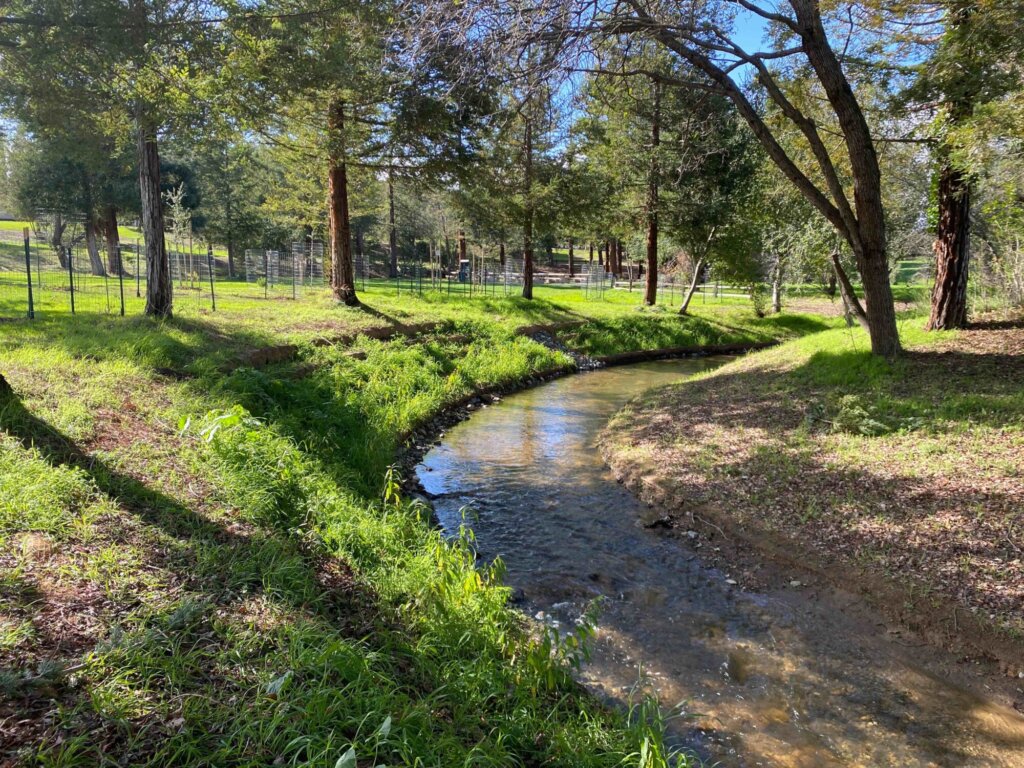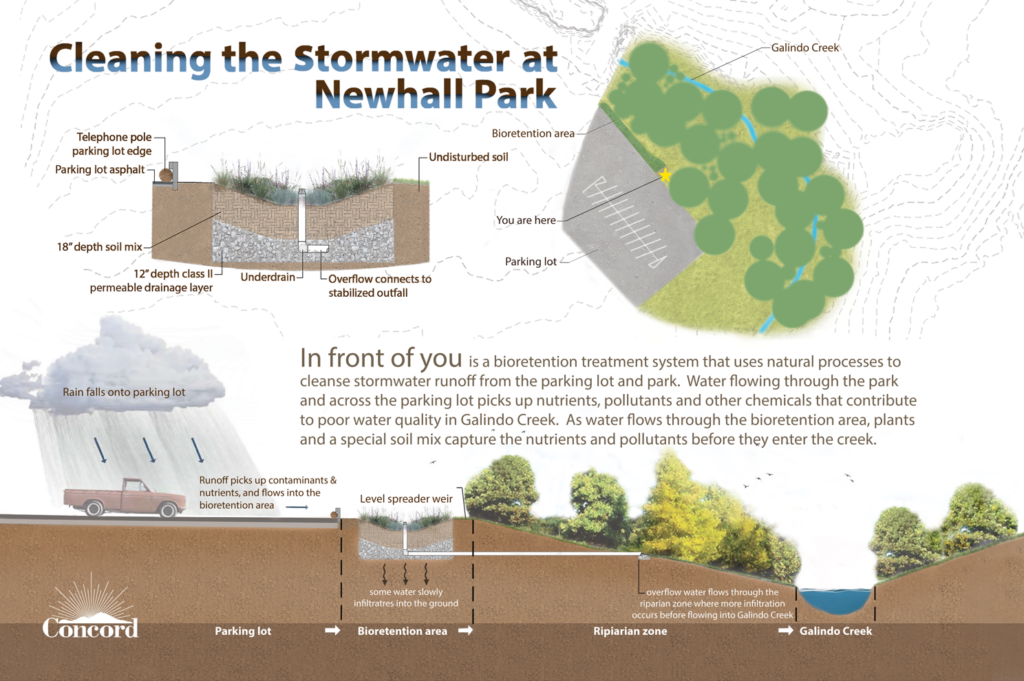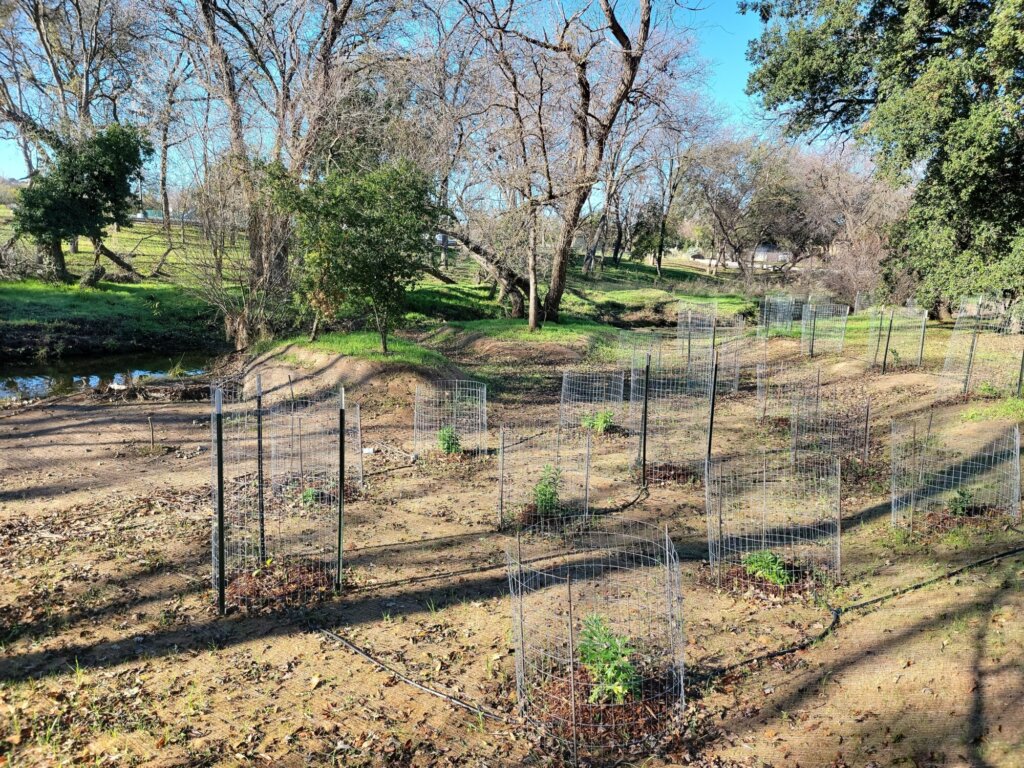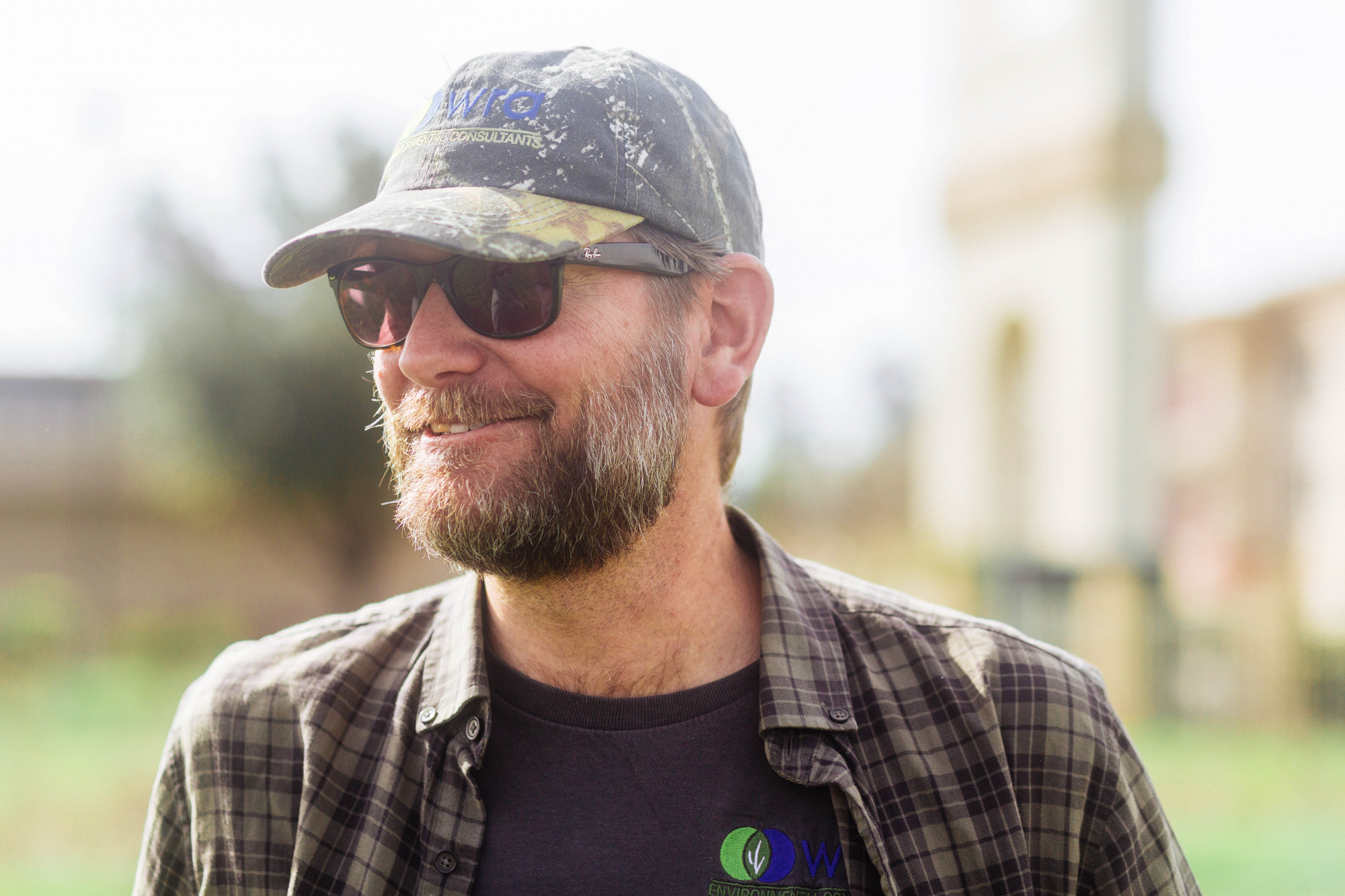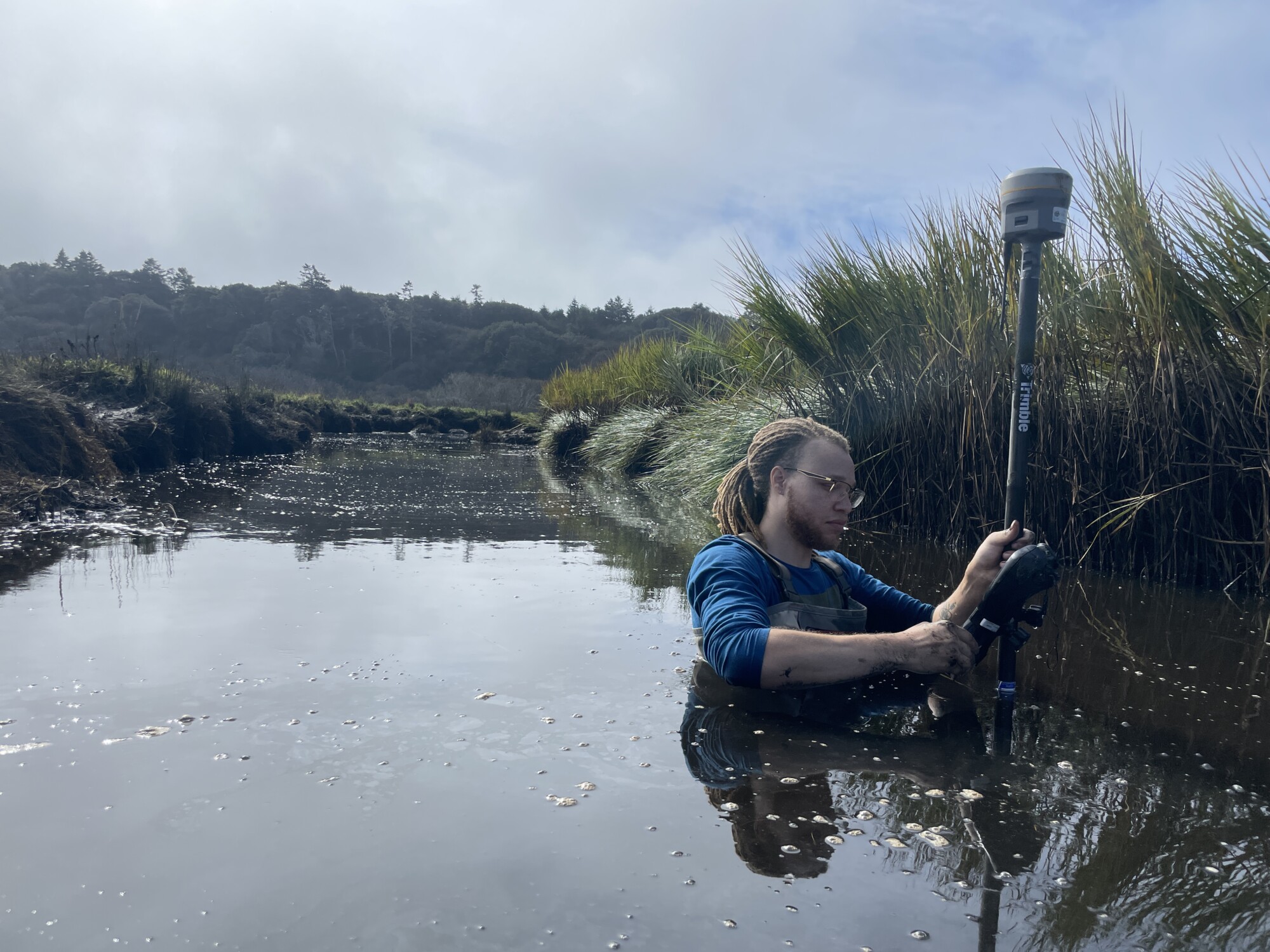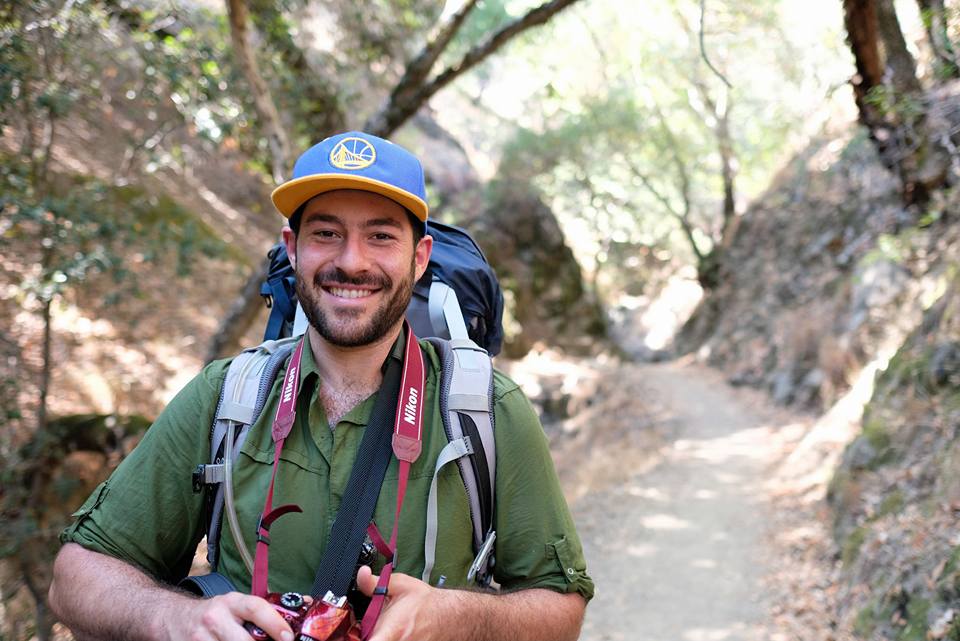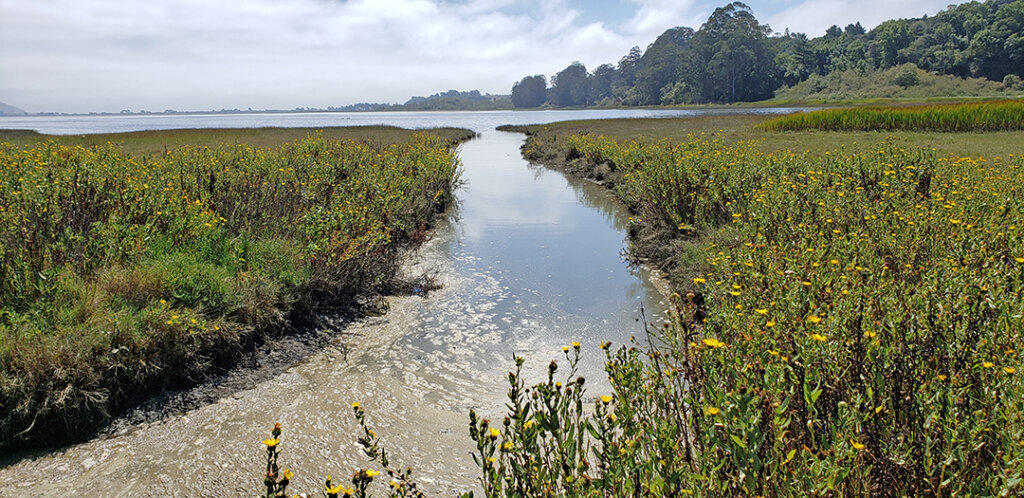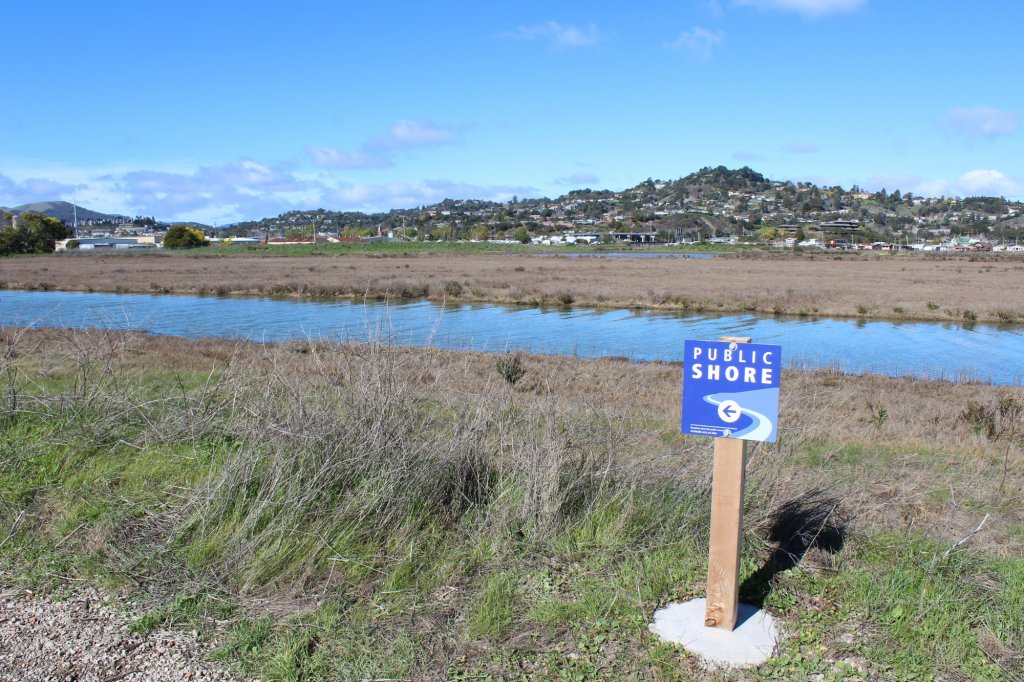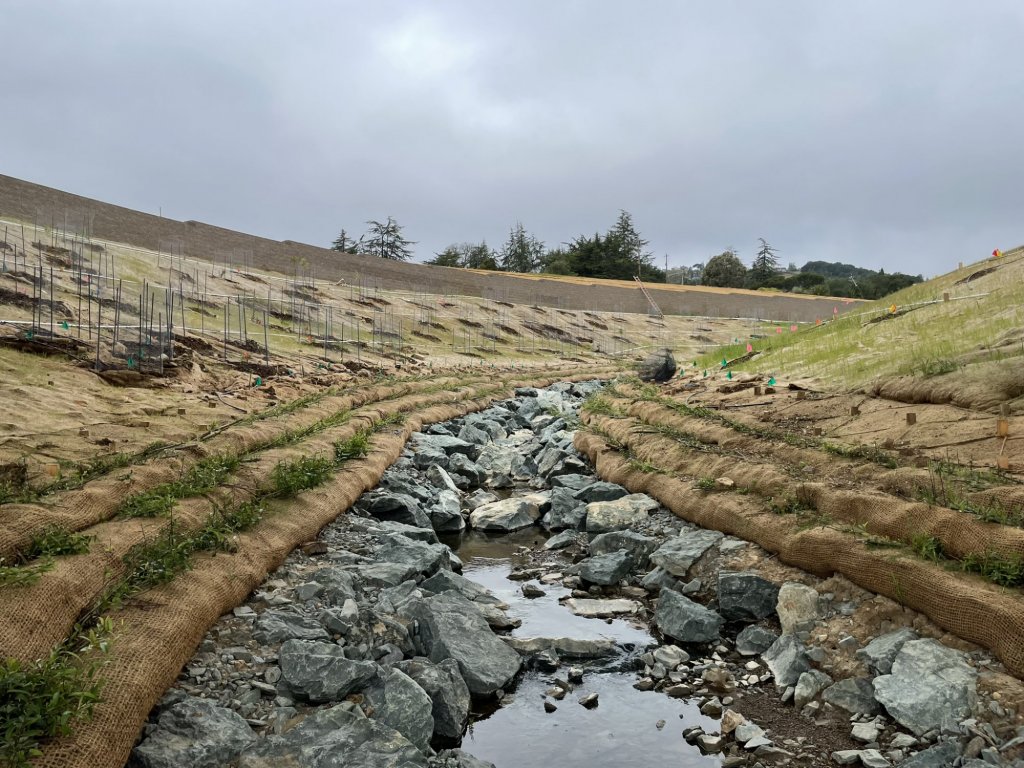Our Projects
Galindo Creek Restoration Project
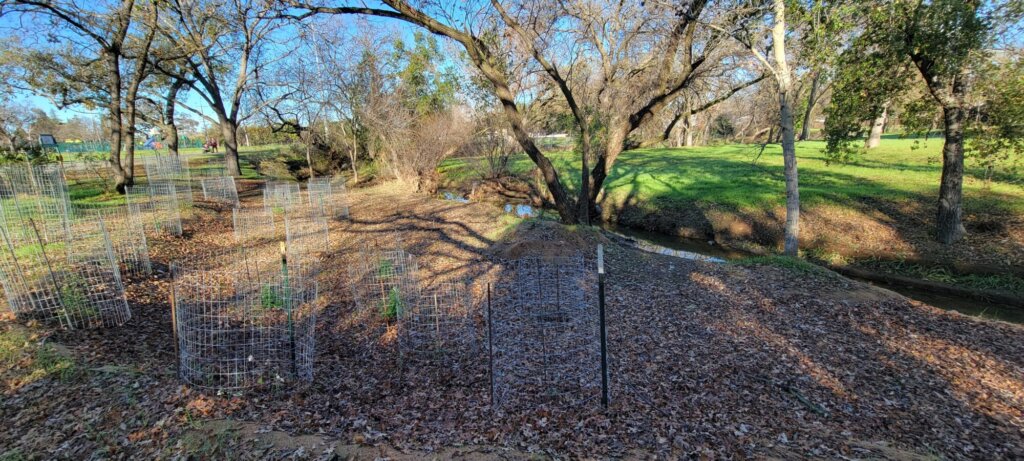
Goal
The project goal is to restore native habitat along a creek corridor and enhance a local community park.
This creek restoration project involves habitat improvements along a 1,000-foot reach of Galindo Creek located in the Newhall Community Park in Concord, California. The work included bioengineering treatments, floodplain reconnection and restoration, revegetation with native riparian plantings, invasive species removal, and installation of a bioretention area to treat parking lot runoff.
The project also provides public education improvements, including the addition of an interpretive panel and seating area to foster engagement with the creek corridor and green infrastructure features.
Approach
WRA contributed innovative restoration design approaches and regulatory permitting strategies to restore and enhance the creek and surrounding natural habitat and provide public amenities to enjoy within the park.
WRA worked with the Walnut Creek Watershed Council to identify an important restoration project that could offer off-site mitigation for impacts related to the redevelopment of Broadway Plaza commercial area in downtown Walnut Creek. The reach of Galindo Creek that flows through Newhall Community Park was identified by resource agencies, local government, and stakeholder groups as a priority candidate.
Historic changes in land use from undeveloped open space to grazing and residential development changed the flow regime of Galindo Creek. The combination of increased and prolonged stream flows, especially in summer months, and changes in riparian vegetation led to channel incision, disconnection of the creek from the floodplain, bank instability, and degradation of habitat.
WRA’s restoration design team identified nine sites along Galindo Creek to increase the ecological and hydrologic functions of the creek. The design included bioengineered bank stabilization via soil lifts, the creation of inset floodplains, the enhancement of existing riparian woodland habitat through removal of invasive vegetation and installation of native riparian plantings, and the creation of new riparian habitat through the installation of riparian plantings adjacent to existing riparian woodland habitat.
A bioretention area was also constructed near the parking lot to collect stormwater runoff into a swale which filters the water and then allows clean water to reenter the creek. A bench and interpretive sign were also installed to highlight the restoration and ecology of Galindo Creek adjacent to the bioretention area, offering an engaging and educational opportunity for park visitors to enjoy.
Impact
The project provided 1,000 linear feet of creek habitat improvements, 150 new native trees within an expanded riparian corridor, and enhanced amenities to benefit the local community and park visitors.
This multi-benefit project includes restoration of streambank, floodplain, and riparian habitats within the heart of a City park, allowing the public to witness and learn about the ecological restoration activities firsthand. The bioretention feature, seating area, and interpretive sign also invite the public to engage with the restoration and green infrastructure improvements.
During construction, the team worked together to implement the project according to the design plans while also “field fitting” the restoration features during grading activities to protect existing native trees and sensitive habitats. A WRA biological monitor was present during ground disturbing activities to help ensure that sensitive wildlife species and habitats were avoided and minimally disturbed. An archaeological monitor was also present to observe and document any cultural artifacts at the site. A team of WRA designers, biologists, and permitting specialists worked closely with the contractor and our partners to ensure that the restoration activities were implemented to meet the project goals with as little disruption to the existing creek habitats and wildlife as possible. The creek restoration will continue to be monitored to ensure the stability of the stream channel and the successful establishment of new vegetation.
Experts
Project Specifics
Project Partners
Walnut Creek Watershed Council
Macerich (Project Developer)
Millsap, Degnan & Associates (Contractor)
Pacific Legacy Inc. (Cultural Resources)
Emerald Site Services (SWPPP Provider)




